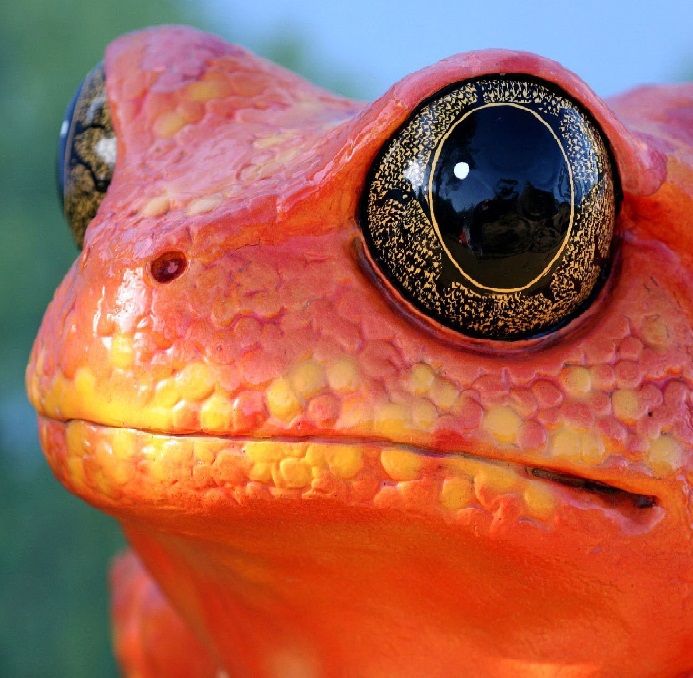The poisonous dart frogs use conspicuous color to tell predators that they are not good to eat. Similarly, a venomous coral snake sports rings of bright color to advertise that it isn’t to be messed with—by a bird considering it for lunch, for instance—while a milk snake, which isn’t poisonous and could be taken quite safely, looks much like a coral snake and trades on the latter’s reputation.
Bauer fellow Marcus Kronforst studies a bad-tasting species of butterfly that is orange, black, and yellow, and other species of unsavory butterflies that mimic its color and pattern to form a uniformed corps of the unappetizing.
Colors can conceal as well as warn, as in, “You can’t eat me because you can’t see me—I’m a cuttlefish and can change my color to match my background in a millisecond.” Or, conversely, “I’m so well camouflaged with stripes [or spots] that you can’t see me creeping up…and I’m going to eat you.” Hopi Hoekstra, Loeb associate professor of the natural sciences, studies the genetic mechanisms at work in a species of mouse that adapts to its environment by being sand-colored if it lives at the beach and dark if it lives inland.
Perhaps some of the richest language of color has to do with sex. Janis Sacco, offers such examples as a male bird of paradise from New Guinea that not only sports much bolder colors than any female of the species, but also a ludicrously long tail. “Pick me as a mate,” he says, “because I have this splendid thing you females may select mates on the basis of, and I must be fit because I have managed to survive despite having to carry it around with me while wearing these obvious colors.” One sex story fit for the tabloids concerns wrasses and parrotfish. In many species, the females in a group are much less colorful than the dominant male. If the male gets eaten, the dominant female changes her sex—and puts on those brilliant colors.
But note: an animal’s color depends on how it appears to the intended observer, and animals don’t necessarily see color as humans do. One amazing apparatus at the The Language of Color exhibition at the Harvard Museum of Natural History allows visitors to experience color through others’ eyes.
A deer, for instance, cannot distinguish reds. A pair of parrots looking each other over may appear richly colored to us, but to the parrots, who see ultraviolet light, they are even better—intensely, bodaciously flamboyant—and must knock each other’s socks off.
The whys of the language are various, and so are the hows. Many animals acquire the language of color through pigments that they themselves metabolize. Others take in pigments through what they eat and show the pigments through their skin, as in the case of the scarlet ibis, which eats crabs and shrimp that eat red algae. And some colors are produced not by pigments, but by microstructures in fur, feathers, or scales that reflect only certain wavelengths of light. If you’re Kermit the Frog, you are green not because you have green pigment, but because you reflect blue light through yellow pigment. Visitors to the exhibition can examine, as if through an electron microscope, the inner parts of a tiny barb on the feather of a bluebird to see how this reflective trick is done. The white hairs of a polar bear or of an arctic fox’s winter coat, on the other hand, are clear—they lack pigment to absorb wavelengths selectively, or structures to reflect certain wavelengths—so they reflect back the entire spectrum, making the animal look white to us.
